Zhug glorious zhug!
In this post and photo, zhug is served with baked sumac chicken breasts. If you don’t eat meat try sumac cauliflower steaks (same recipe just use cauliflower in lieu of chicken), topped with zhug. I have included the sumac chicken recipe at the end of this post. Alternatively, Zhug is delicious on steak, as a sauce to dunk bread or vegetables.
What is zhug/zhoug or is it skhug, jooj, s’hug? Zhug is a sauce or, is it a dip, perhaps a marinade? Depending on who you ask, zhug (as we shall henceforth refer to it) wears many hats but, I am fairly certain I can confidently refer to zhug as a condiment. A condiment with a higher calling (a spicy calling) made of fresh herbs, fresh garlic, a spicy pepper or two, and nothing overly fancy. A condiment that adds zing, and friendly (depending on your mood) heat to the table.
Zhug is often used quite similarly to its Italian cousin, pesto. Pesto is quiet and mellow, whereas zhug is loud and fiesty. Zhug is closest to chimichurri. Chimichurri has a base of parsley, and also uses red wine vinegar with oregano. Zhug is spicier and dials up the zing. Chimichurri has a different herbal flavour profile, don’t let looks deceive you.
Zhug is a beloved Middle Eastern condiment that varies slightly in flavour, and texture depending on the region. The origins of zhug are also as storied as its spelling/pronunciation and ingredients. From what I have read, it seems to have originated in Yemen. As it travelled through the region, the recipe evolved to suit the local ingredients and palates. Zhug is massively popular in the Middle East spanning the entire geographical region from the Levantine region crossing right over to the Arabian peninsula.
This recipe is simple and quick to prepare. I do recommend you allow for 1 hour to let the zhug’s full bodied flavours develop. Zhug has proven to be a crowd pleaser on my table to whomever, and however it was served. My kids love pickled jalapenos so I have been making our Zhug using pickled, and this is what I did for this recipe.
As a general practice, be very careful, and aware when handling hot peppers such as jalapenos. I wear gloves. Do not touch your eyes or nose after handling the peppers. Jalapenos aren’t too crazy on the Scoville heat scale, but it is good practice to handle this ingredient carefully. Did I mention I wear gloves! I found this chart online while doing a simple search ‘Scoville and peppers’. Jalapenos are at the top of the bottom third. Please get in the practice of wearing gloves with hot peppers, wash your hands and don’t touch your eyes.
Ingredients
4 cloves of garlic
1 cup of cilantro leaves (packed)
1/2 cup parsley (packed)
3 jalapeno fresh peppers - seeded, reserve the seeds in case you want more heat - chop roughly -
OR
option to use pickled jalapenos 1/8 cup - 1/4 cup (to taste)
1/2 tsp red pepper flakes
1 tsp cardamom (optional - sometimes I leave this out)
1 tsp cumin
1 tsp salt
1/2 cup extra virgin olive oil
2 Tbsp lemon juice - option to add 1 Tbsp more if needed
lemon zest (optional)
1 tsp honey (optional - I ony add the honey if I used fresh jalapenos)
Method
There are two methods to making this:
Lightly sauté the garlic then add the rest of the ingredients together with a couple tablespoons of olive oil, sauté about 3 minutes prior to blending.
All the ingredients are blended fresh.
I have done both methods, I prefer the crisp flavours from fresh. I don’t sauté anything prior.
Preparation - using all fresh herbs and ingredients.
Place all the ingredients (not the oil) in a blender and pulse or blend until everything is fairly smooth. Add the olive oil and blend.
I recommend tasting a couple times. The initial taste is right after everything is blended with the olive oil. If you want more of a spicy kick, add some of the jalapeno seeds (1/4 tsp at a time - remember you can always add more, it is much harder to dial down the heat). If you find the sauce is very bitter add a pinch of salt. Don’t do too much right now to tweak the flavour. Zhug needs to sit in the fridge for at least an hour for you to get a full understanding of the flavour. After an hour, taste once again and you will find the sauce has taken on a whole new richer and mellower taste.
Serve with you favourite protein. Use it to dunk bread, vegetables or even as a marinade (do remember to reserve some for serving).


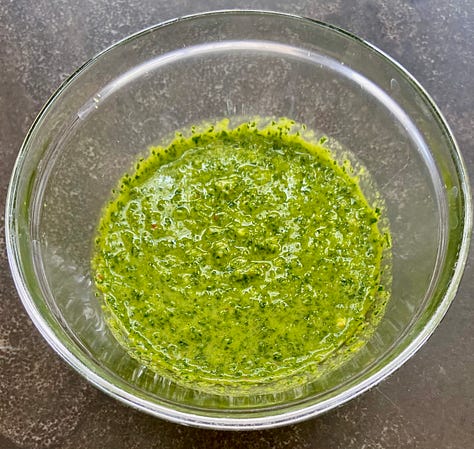
Chicken recipe from this post
Recipe for baked sumac chicken breasts (thighs are perfect as well) - If using cauliflower steak, prepare the spicing, and rub over the cauliflower and bake until done to your liking.
I like to pound the chicken breasts so that they are somewhat uniform in thickness, and thus cook evenly. You could also just cut the chicken breast in half lengthwise - idea is for the chicken breast to cook evenly and quickly. This step is fully optional - just be sure to watch that the chicken is cooked at the thickest part of the breast.
4 chicken breasts, number of thighs or breasts in up to you
Seasoning mix -
1/4 cup extra virgin olive oil
1 Tbsp tomato paste
2 dried cilantro - chopped
1 tsp garlic powder - optional
1 Tbsp honey or date syrup
1 tsp cumin
1 tsp paprika
1 Tbsp sumac
pinch of red pepper flakes - optional
2 tsp salt - more to taste
1/2 tsp black pepper
zest of one lemon
Method
Combine all the ingredients and then coat the chicken.
For optimal flavour, allow the chicken to marinade for minimum one hour.
Bake, BBQ or Air-fry. In the oven at 400 F for about 30-35 minutes (depending on the thickness of the chicken). Air fryer on high or 400 F for 25-35 minutes. Check for doneness, and let rest at least 5 minutes prior to serving. The chicken should have an internal temperature of 165 F.
Serve with Zhug, and a side of rice, pasta or a simple bulgur* (as shown in the photo).
*NOTE - Bulgur is cracked wheat. I used bulgur #3 which is the coarse version. It was rehydrated in water overnight then a quick sauté with 1 clove of mashed garlic and extra virgin olive oil.
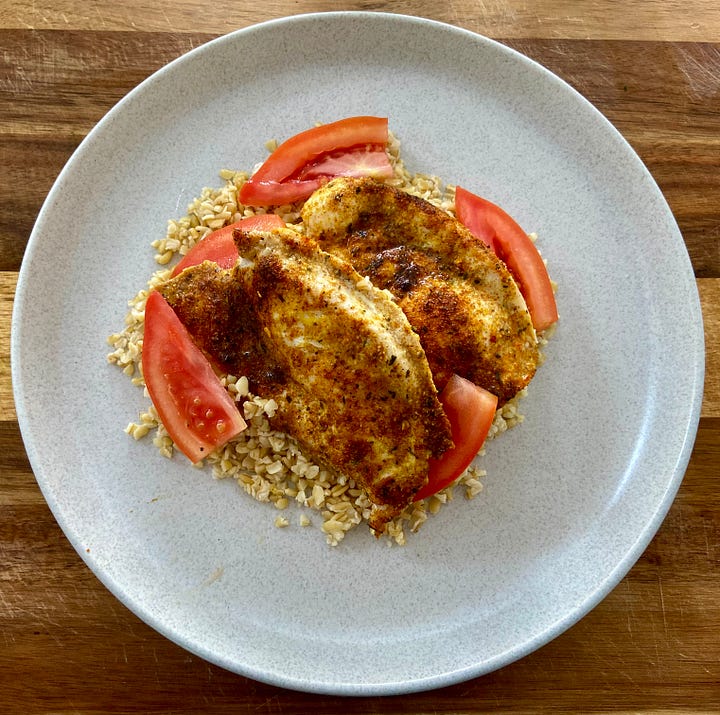
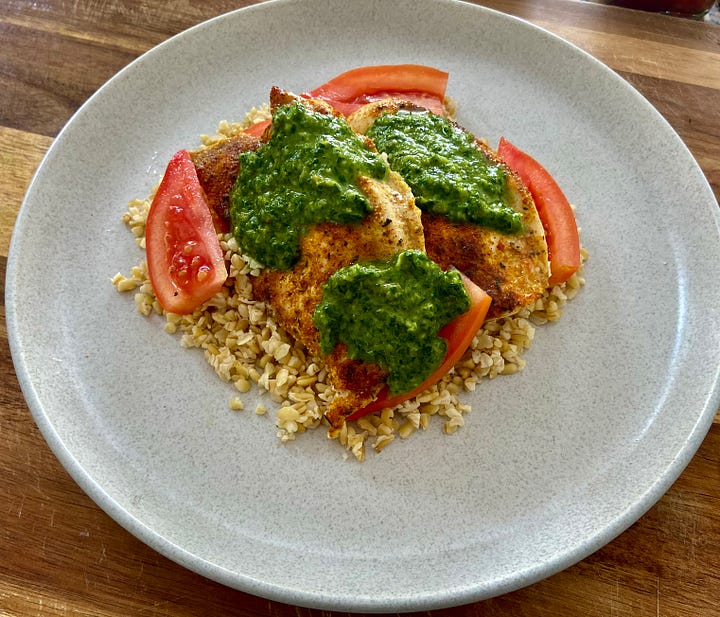
Serve and enjoy!




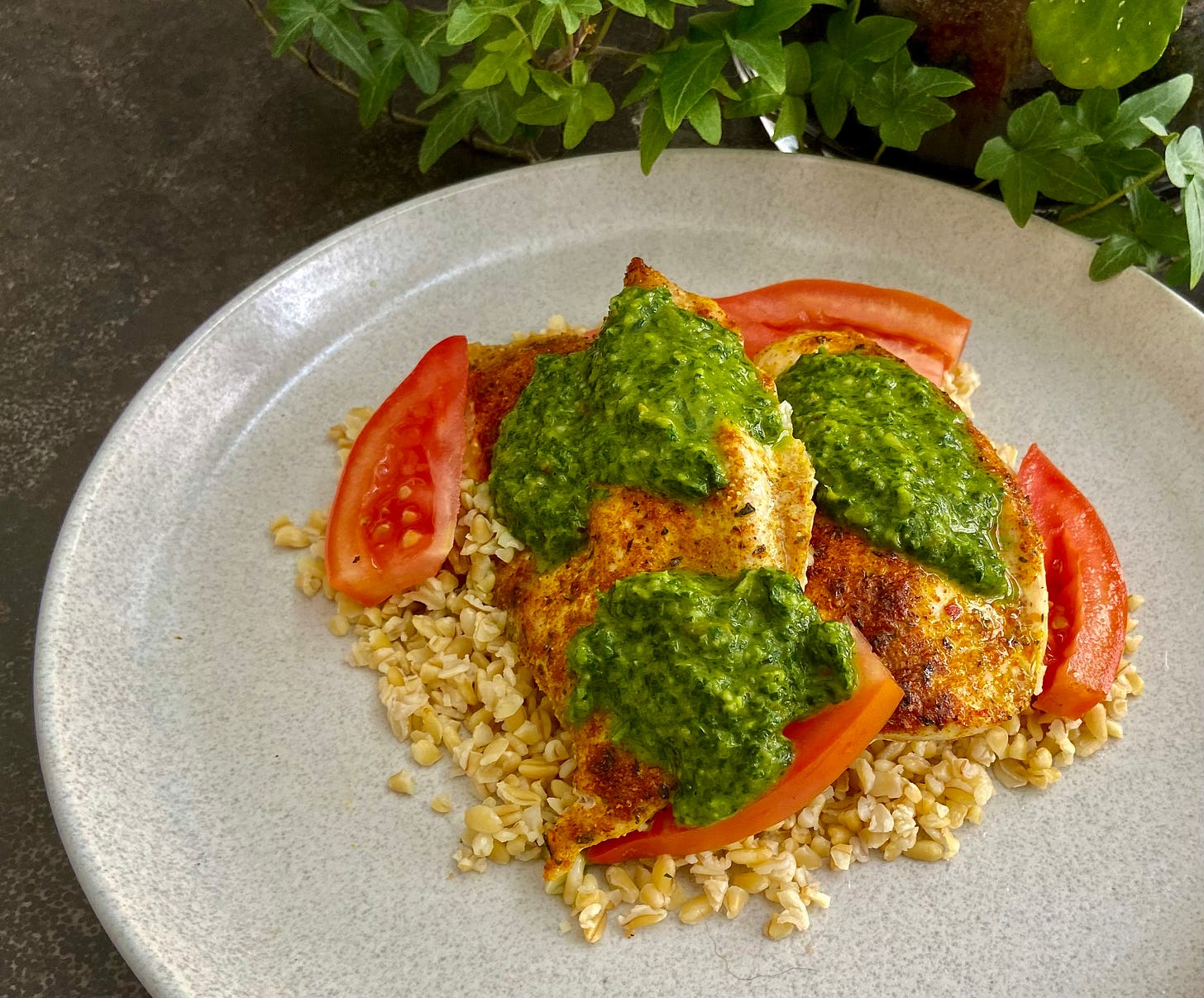

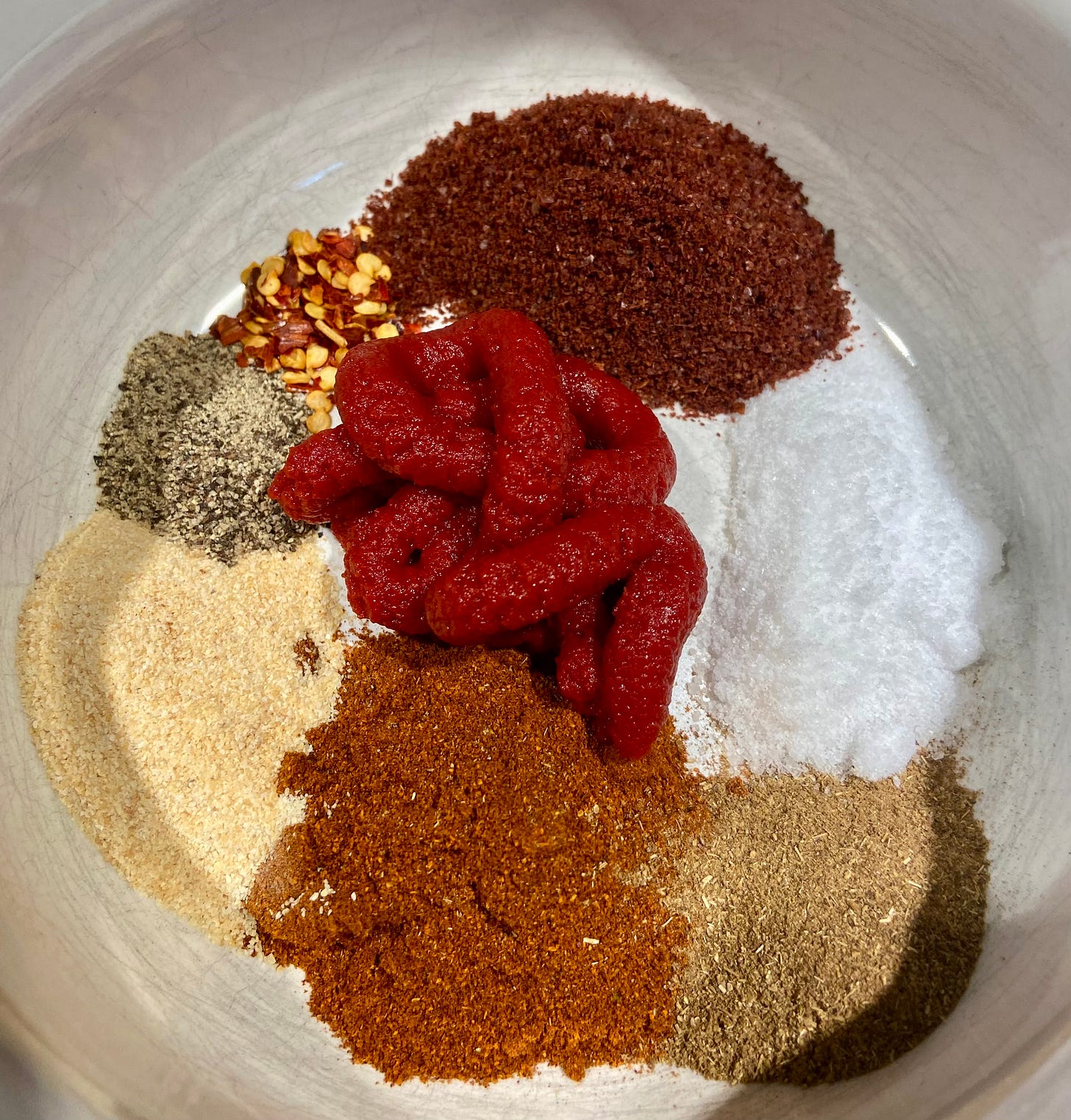
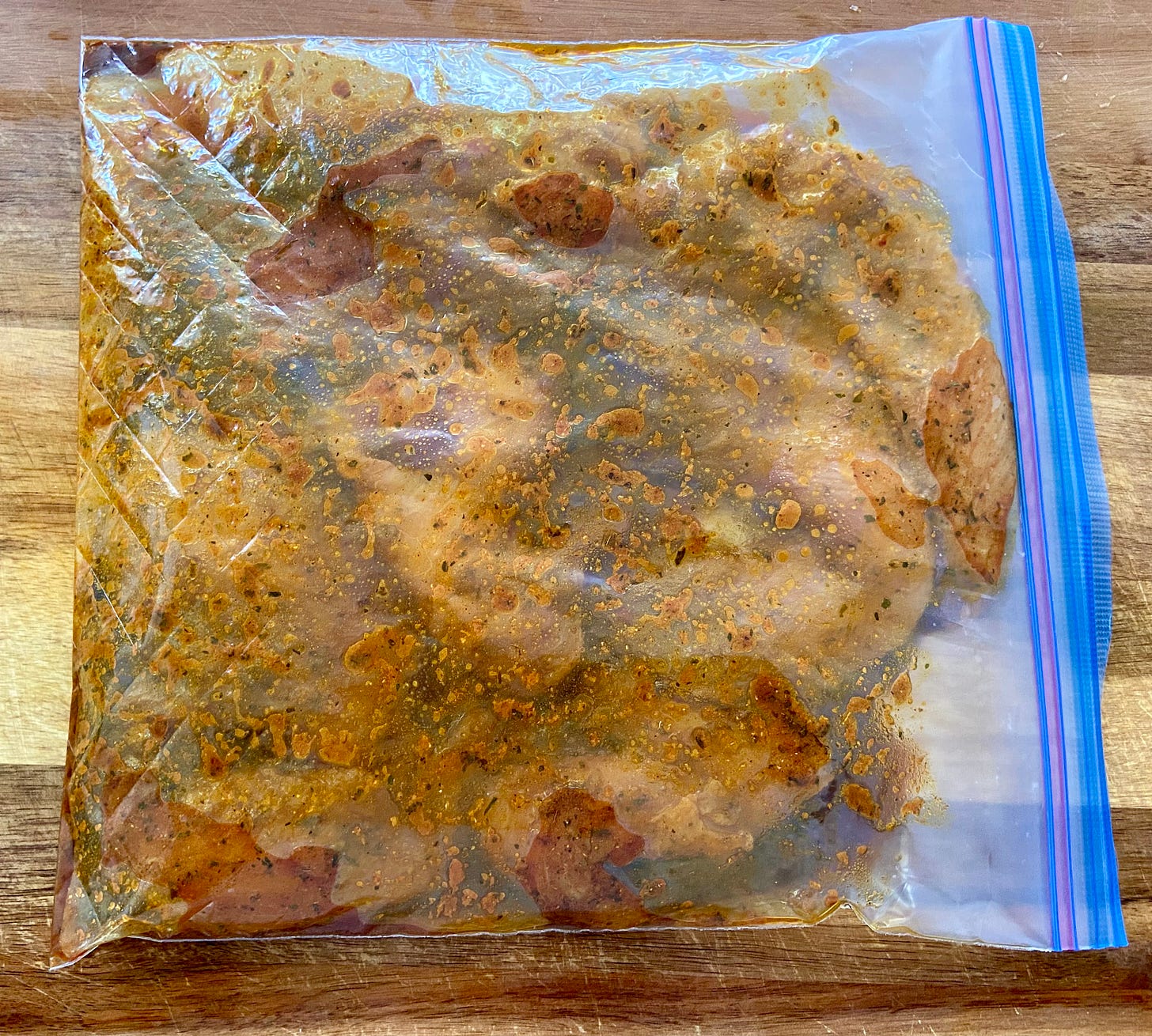
Your Zhug looks fantastic Sheryl, and the sumac chicken a taste sensation. Great recipes.